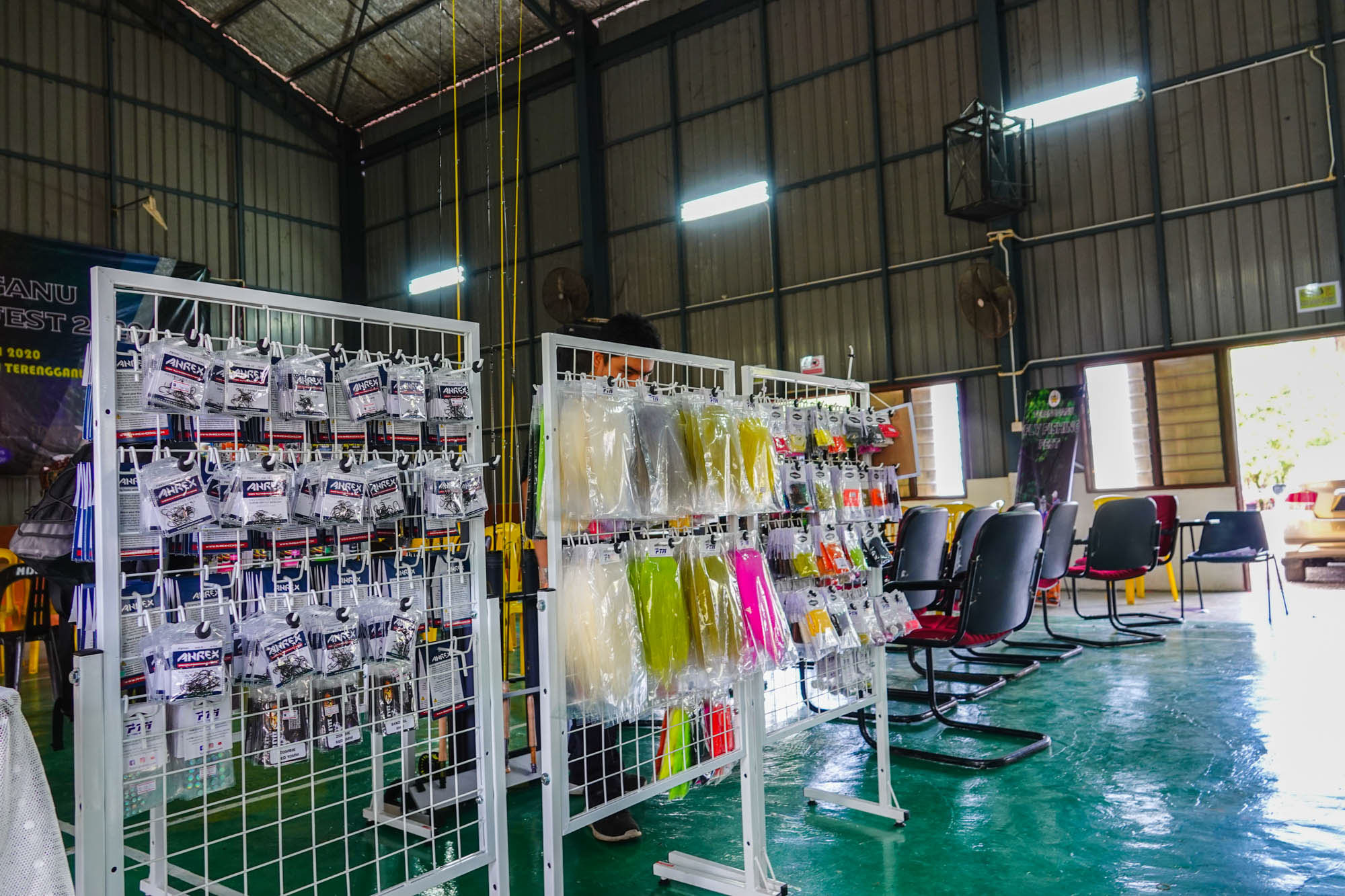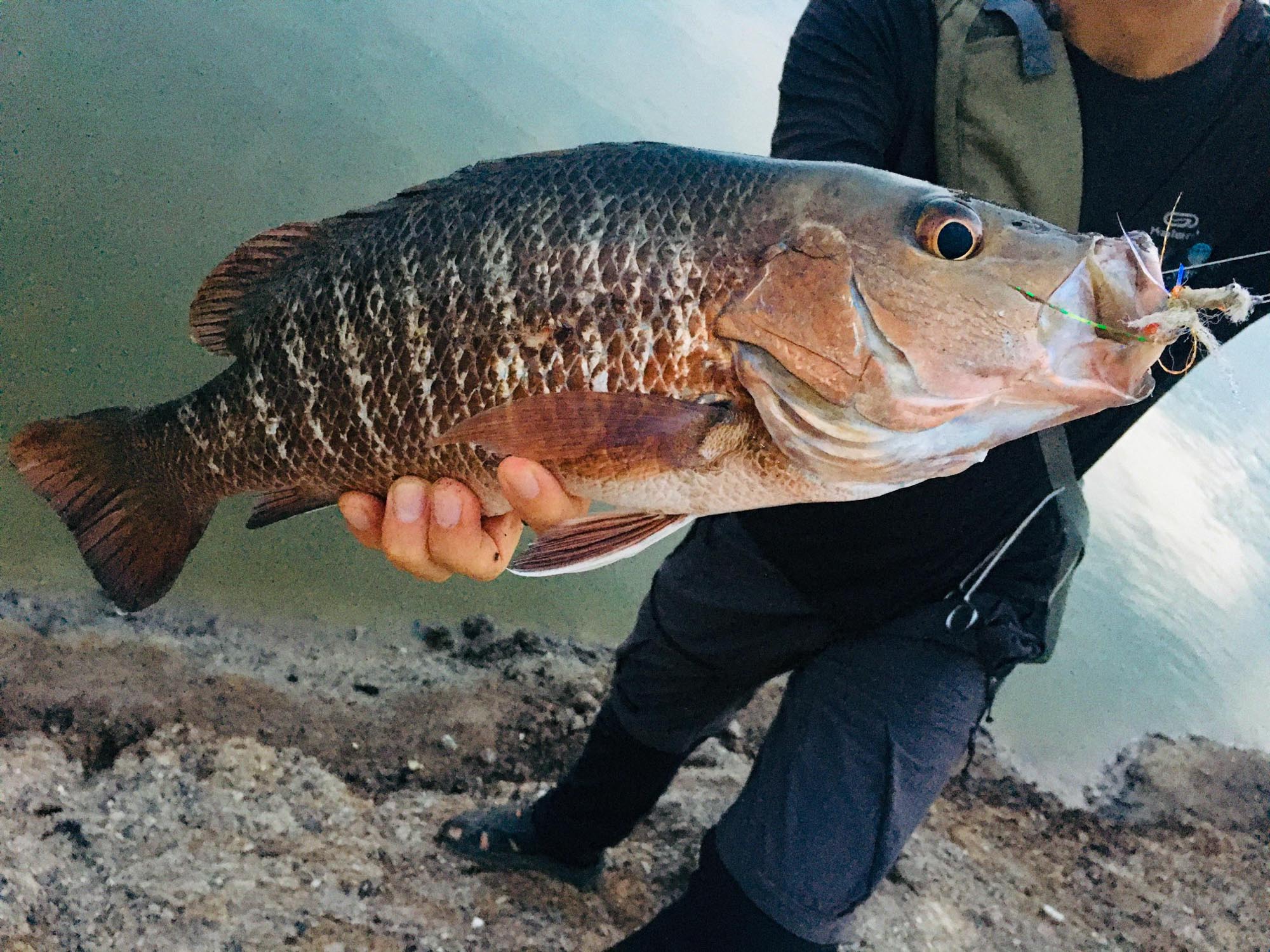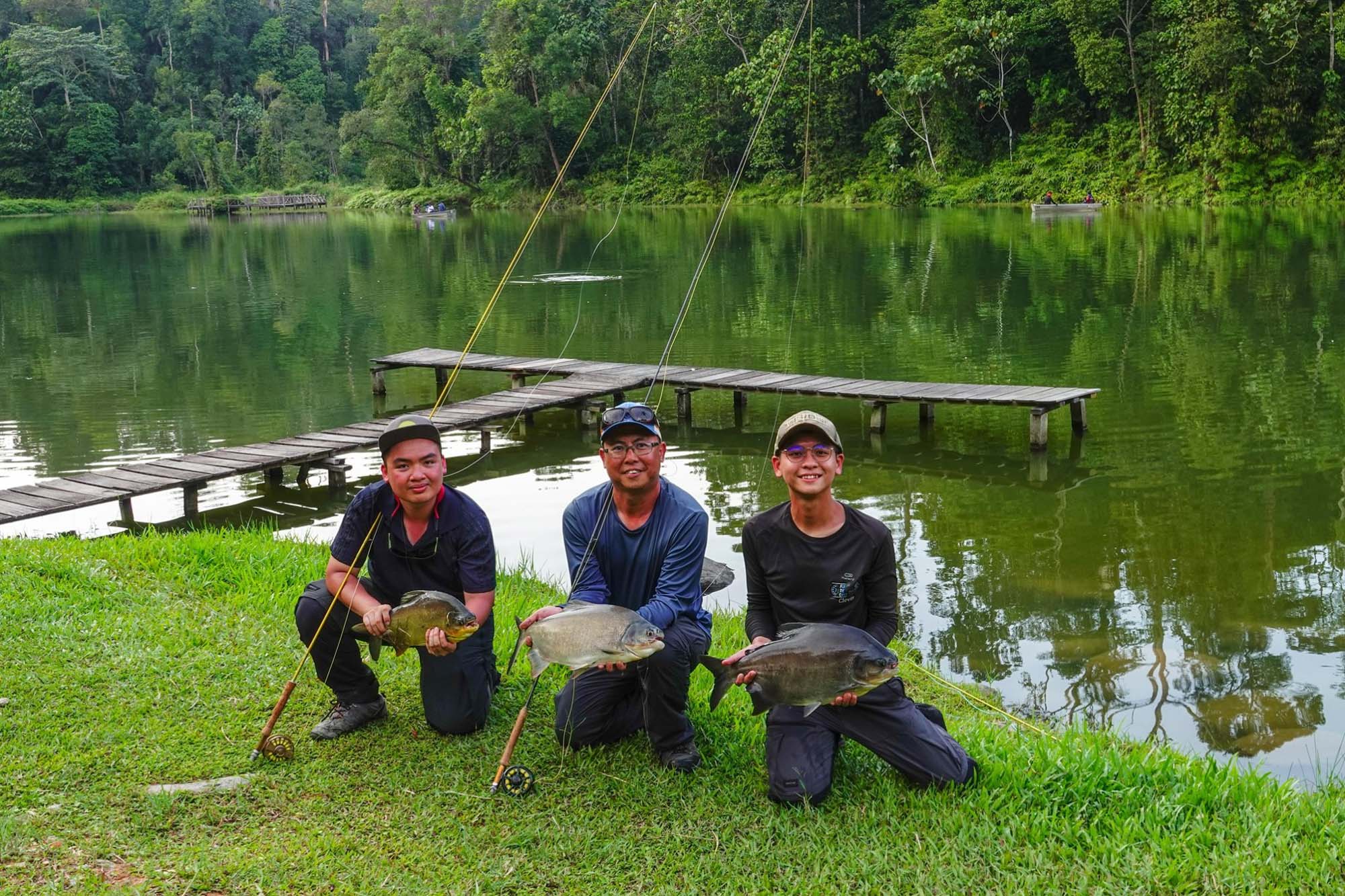The Silver… no, the ‘Blue’ Lining of Hope
The Silver… no, the ‘Blue’ Lining of Hope Nic Chew FFI CCI It was just like any another normal Sunday morning routine where we head over to a local pond to try out new pattern and learn different fishing techniques to further polish our crafts. This trip was not any different until Darrell had an unexpected catch. This week, we decided to revisit Kok Fishing Pond at Rawang. This round with us were Brandon, Ben, Otto, Thian, Darrell and Janice. As usual, upon arrival what we can see was swarm of people and what greeted us this time was this guy beside us with his “katak reel” that sang as the patin pulled it across half the distance of the pond. Without wasting anymore time, we unpacked our stuff under the big tree for its shade and began casting into the pond full of frenzied patin. Fish on! Just a couple of minutes into fishing and there Ben and Brandon caught the first fish of the day. However, it was so hot that I had decided to wait out until it had cooled off a bit. There I was thinking how good it would be if the weather was cooler. There I jinxed it, granted the weather started to cool off but what followed after was heavy rain pouring down like heaven’s smith. One by one all anglers at the pond were packing up and ran to look for shelter, as for us we had made use of the metal bar nearby and our tarpaulin to quickly pitch up a makeshift shelter. Despite this, Otto and Darrell weren’t giving up till the last minute, they were casting one after another hoping that one would hook up. It was that time when the rain was simply too heavy and Darrell quickly reeled in his line, suddenly Otto’s rod started twitching and you guessed it, a fish! What a sight! Seeing the fish was almost on land, I immediately looked for the net and assisted Otto in landing his fish. That’s the fish you can see from the photo below. After that, we too went and hide in our cozy tent while waiting for the rain to stop. It was a quick rain though, around 30-45 minutes the rain had started to subsided, after the pulled from the patin earlier and craving for more, Otto continued to fish then followed by Brandon and rest of the gang. Not long after, Brandon caught another patin again. Even though all of us were casting to the same frenzy but Brandon was definitely catching more fish compared to all of us and I got none so far. So to put the luck factor out, I decided to change my fly from a baitfish fibre bread fly to rabbit fur zonker bready fly and that worked like a charm. I started catching one fish after another too. I wanted to experiment more with more variable with the fly but was relunctant to change the fly that worked so well. Eventually I still changed, testing the colour, size, sink rate and more. Then we were also joined by Razlan and his friends at the other side of the pond too. By 7p.m. everyone had gotten handful of catches, we had multiple double, triple or even quadruple hook ups. Fish population and susceptibility to fly is definitely not an issue here. However it was not the case for Thian, seems like luck was not with him that day. And as usual I spoke too soon, the moment I finished thinking about it that he hooked up a fish then Darrell too, a double hook up again! Thian was able to land his fish faster so I helped him to capture his trophy shoot. Suddenly Darrell began to laugh out loud as he had caught a fishing rod! Yes you read and hear it right, a fishing rod, a blue fishing spinning rod! What’s more, the fish was still hooked to the rod! We tried to reel it in but the reel and drag were covered with mud and got stuck so the attempted was in vain. The owner of the rod must have heard our laughter and saw Darrel reeling his rod up. He quickly ran over and reclaimed his rod. It was rather unfortunate that I was not able to take the photo of the scene as my hands were packed with taking trophy shot for Thian and helping Darrell to get the rod before it fell into the water again. Even so, I believe it will be a topic that we will bring up and laugh over it over a gathering for a long time. Think about it, what are the chances of one catching a fishing rod on fly? At the end of the day, it was a fruitful or fishful day for us. We were able to catch plenty of fish and validate some of our questions on the fly pattern and materials. Most importantly, the smile and joy on the face of the owner of the rod we caught it back for him just made the whole trip worthwhile. ~More Gallery Click Here~









